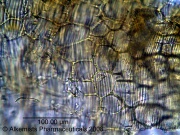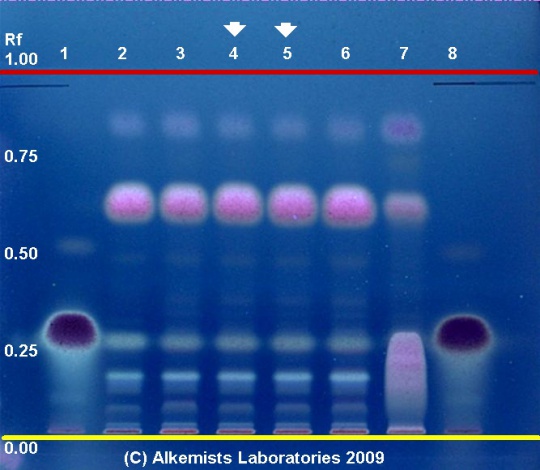Coriandrum sativum (seed)
(→USD) |
(Nomenclature updated) |
||
| Line 1: | Line 1: | ||
| − | = | + | =Nomenclature= |
| + | |||
| + | {{nomenclature | binomial=Coriandrum sativum | ||
| + | |authority=L. | ||
| + | |family=Apiaceae | ||
| + | |scn=coriander (fruit); cilantro (leaf) | ||
| + | |syn= | ||
| + | |ayurvedic=dhanyaka | ||
| + | |pinyin=yuan sui; hu sui; yuan sui (whole plant); yuan sui zi (fruit) | ||
| + | |aka=Chinese parsley; culantro | ||
| + | |notes= }} | ||
| + | |||
| + | |||
=Macroscopic Entries= | =Macroscopic Entries= | ||
{{Macroscopy | source=United States Dispensatory (1918) | {{Macroscopy | source=United States Dispensatory (1918) | ||
Revision as of 22:45, 13 March 2014
Contents |
Nomenclature
Coriandrum sativum L. Apiaceae
Standardized common name (English): coriander (fruit); cilantro (leaf)
Ayurvedic name(s): dhanyaka
Pinyin name(s): yuan sui; hu sui; yuan sui (whole plant); yuan sui zi (fruit)
Macroscopic Entries
|
Microscopic Entries
|
HPTLC Entries
|
Coriander (seed) (Coriandrum sativum) Lane Assignments Lanes, from left to right (Track, Volume, Sample):
Reference materials used here have been authenticated by macroscopic, microscopic &/or TLC studies according to the reference source cited below held at Alkemists Laboratories, Costa Mesa, CA. Stationary Phase Silica gel 60, F254, 10 x 10 cm HPTLC plates Mobile Phase toluene: ethyl acetate [9.5/0.5] Sample Preparation Method 0.5g+5ml dichloromethane, sncte/cntrfge/dcnt, evap dry (N2), qs 1.0 ml Toluene Detection Method Vanillin/H2SO4 Reagent -> 110° C 5 min -> UV 365 nm Reference see Herbal Drugs and Phytopharmaceuticals,Max Wichtl, 3rd ed., 2004
|
Other Points of Interest
Cite error: <ref> tags exist, but no <references/> tag was found


